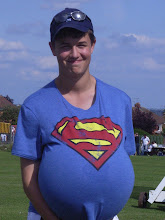1.Money Maker and Buisness man:This Character takes no prisoners and always trys to get what he wants no matter what price he may have to pay they are also generally lazy and will take the easy route avoiding competion.

2. The no nosense Hard Man: This Character unless you know him personally then you tend to avoid any kind of contact if possible at all times, this character also may have a soft side to him when it comes to his family as he will show a great deal of care towards them and will do anything to protect them, and you will most defenatly not want to get in the way of what he wants!!

3.Innocent Hardworker and Pushover: This Character is 9 times out 10 a really nice man in some cases the Grandad of the soap, who will work hard to feed his wife and family and will always help a friend but sometimes will do things that make get himself into trouble as he can be taken advantage of.

4.All round nice guy: This Character is normally liked by all in the Soap and by the audience, Normally he is in a strong long term relationship, he would not hurt a fly and do what he can when he can for the people around him.




